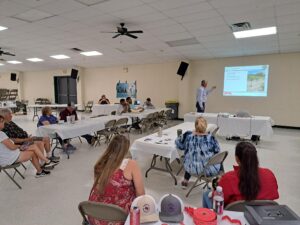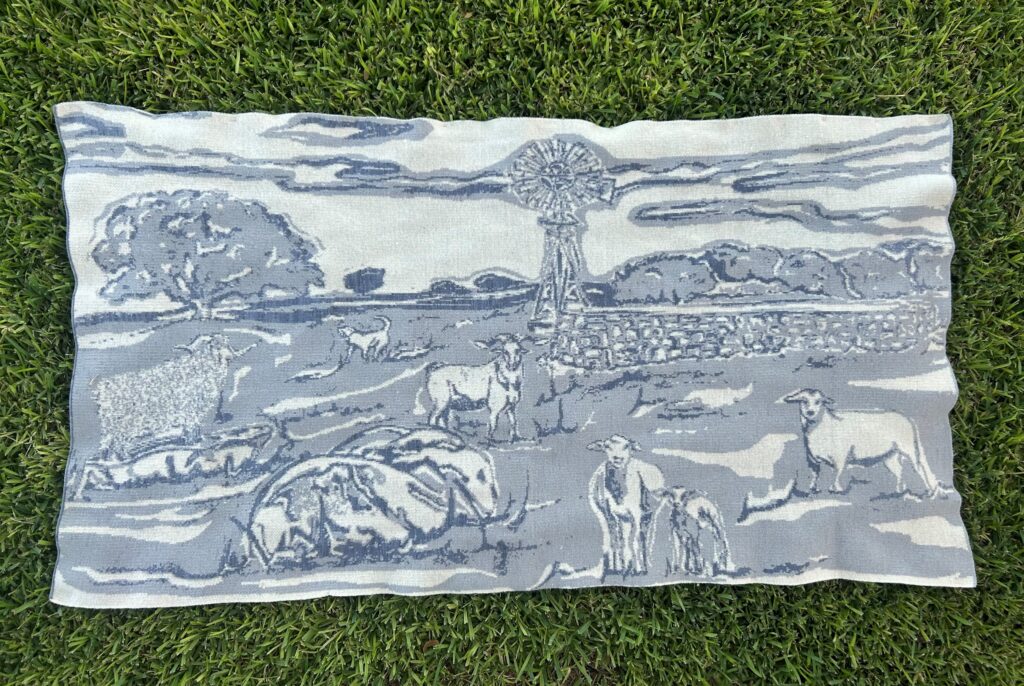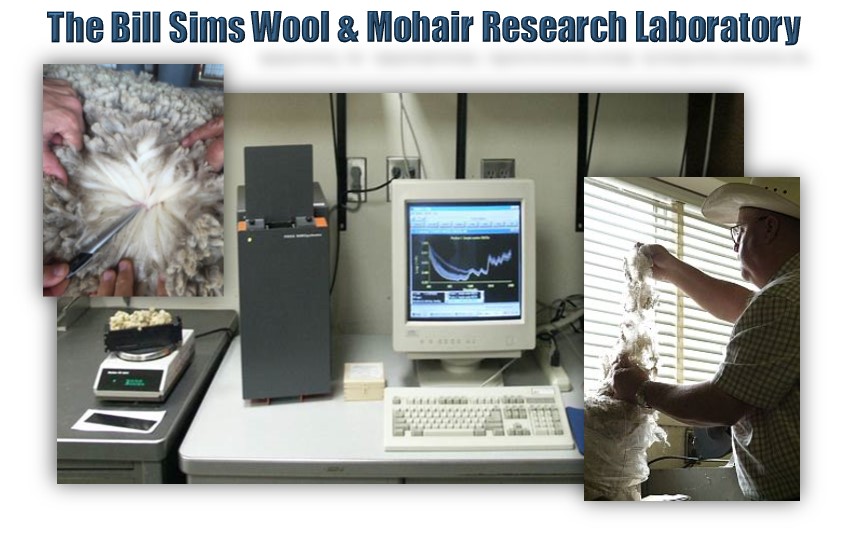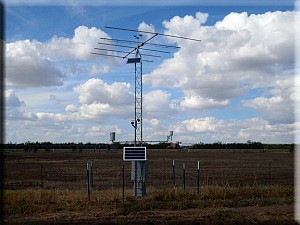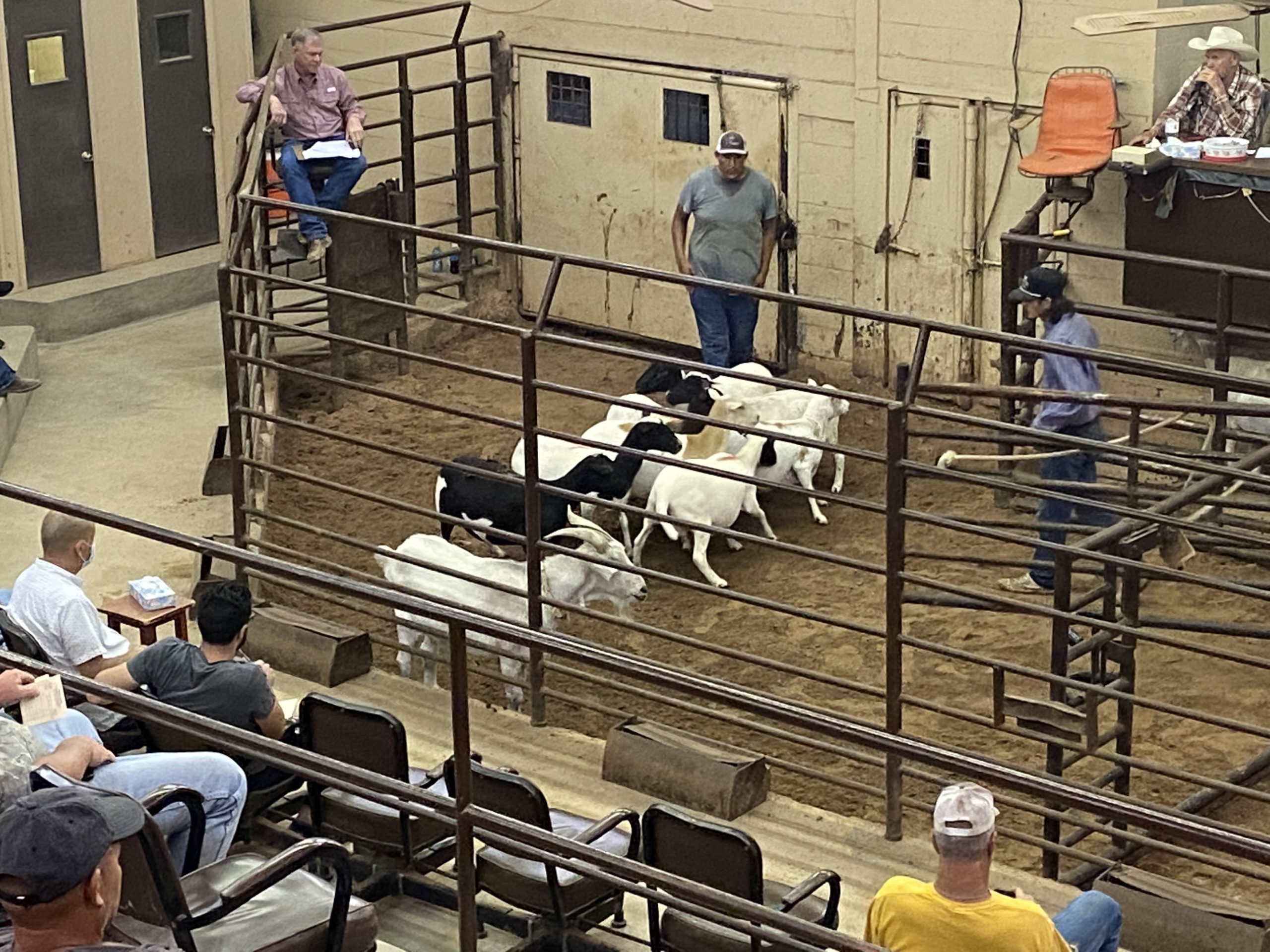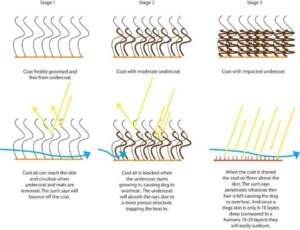 Proper grooming of your long-haired dogs is critical in the extreme heat we have been having in the state the last few weeks. Dogs with coats that are properly cleaned out of dead hair will be cooler as their coats trap cool air in the night and early morning hours that helps cool them throughout the day. Brushing the dogs with slicker brushes and deshedding combs is the best option. Do not clip your LGD unless necessary as their coats cannot trap cool air properly and you will only make them hotter. Provide lots of shade and places with cool water that the dogs can lay in to cool down in the hot weather. Try moving livestock and dogs in the early morning hours so they can be down when temperatures rise.
Proper grooming of your long-haired dogs is critical in the extreme heat we have been having in the state the last few weeks. Dogs with coats that are properly cleaned out of dead hair will be cooler as their coats trap cool air in the night and early morning hours that helps cool them throughout the day. Brushing the dogs with slicker brushes and deshedding combs is the best option. Do not clip your LGD unless necessary as their coats cannot trap cool air properly and you will only make them hotter. Provide lots of shade and places with cool water that the dogs can lay in to cool down in the hot weather. Try moving livestock and dogs in the early morning hours so they can be down when temperatures rise.
AgriLife Livestock Guardian Dog Program: Events and Update
Our next online seminar will be on Aug. 17 at 3 p.m. on Zoom. Check out our Facebook page for more information as the event gets closer. Dr. Katherine Lord will be returning to continue her discussion from November of 2022 on canine behavior and bonding. Do not miss this great presentation! The online seminar will be free as always. You can sign up on our events page.
The Texas LGD Association held its first annual LGD Field Day in Caldwell at the Burleson County Fairgrounds on June 10. The event consisted of workshops on bonding LGDs with cattle, using LGDs with poultry, GPS tracking, ranch fencing and a breeder panel. Vendors and LGD breeders were also on site as well. The association would like to thank all of the generous sponsors that made the event possible!
LGD FAQ’s
In May we started a three-part article on frequently asked questions that producers submit when they contact our program about LGDs. Below is the third and final set of commonly asked questions and answers we provide to producers that contact us.
- Should LGDs be socialized?
A: Yes, they should be socialized and handled regularly! Just because LGDs are not pets does not mean they should never have any human contact, or even minimal human interaction. LGDs need socialization and training just like any other working dog. Coming when called, walking on a leash, staying calm while tethered, crate training and traveling in vehicles are important skills for a working LGD. These things allow the dogs to be easily moved from one location to another and to be examined and treated for any injuries. A fearful guardian dog is difficult to handle and a liability to the owner. Appropriate handling, done in the pasture with livestock, reinforces positive interaction with humans and does not turn LGDs into pets.
- What is the best age to get an LGD puppy?
A: A puppy should stay in a litter environment with its mother until 8 weeks of age. This way the puppy learns appropriate dog manners, bite inhibition, livestock manners and guarding behavior from its mother. Some breeders keep LGD puppies up to 12-16 weeks of age for maximum learning benefit. It’s very important that LGD puppies are raised in direct contact with the livestock species in which you intend them to guard on your ranch. If a puppy is not bonded to livestock by 14-16 weeks of age, the chance of it being a good guardian dog decreases which may be a cause of roaming.
- Q: Are LGD’s the same as herding dogs?
A: No! While both types of dog’s work with livestock, they are not the same. Herding dogs use prey drive instincts to round up and move livestock by command from a rancher. LGDs have been bred for thousands of years not to have prey drive instincts and are used to protect livestock from predators generally independent of humans. Both types of dogs look and act differently with livestock.
- Q: Can I get one dog that will guard and herd my livestock?
A: While this idea sounds like a great one, it is not! LGDs do not have prey drive instincts. Herding dogs use prey drive instincts such as eye, stalk, chase, etc. to make livestock move for them. Breeding LGDs and herding dogs will likely result in offspring that have prey drive and guarding instincts which can causes issues with chasing, biting, and killing livestock as the dog matures.
- Q: Can any breed of dog make a good LGD?
A: In most cases, no! LGD breeds of dog have been bred for thousands of years to have the innate ability to effectively guard livestock. Only a small portion of the job of an LGD is taught, the vast majority is natural instinct that the dogs use to do their jobs.
- Q: What breed is best for my operation?
A: That depends on the type of terrain, predator load, size of pasture, quality of fencing, management style and type of predators. Great Pyrenees, Anatolians, Kangal’s, Maremma and Akbash are all common breeds in Texas. Each of these breeds have different physical characteristics, such as size, color, and hair coat. Each breed tends to have slightly different behavioral characteristics, although a lot of variation exists within a breed. Matching the right physical and behavioral characteristics to your operations is important to the success of your LGD program. It is advisable to talk with several LGD breeders to find the best fit for your operation.
- Q: How much training time is involved in teaching a puppy during the bonding phase?
A: While having an older dog who can help train a younger one is ideal; you will still need to supervise and teach your pup how to properly act around livestock. This process will start at 8 weeks of age and take many months of supervision and correction to achieve a trained LGD. Most dogs settle down and mature at 18-24 months of age. Extra supervision is needed from 8-18 months of age during adolescence.
- Q: What about using a donkey or llama instead of an LGD?
A: Llamas and donkeys are prey animals and reactive to threats they encounter. In some situations, they work well and others they do not. They generally only work for canine predators and only work as a single animal per pasture/herd. When more than one llama or donkey is used in the same pasture, they often form a herd of their own and leave livestock unprotected from predators. LGDs are proactive to threats– setting up perimeters and constantly patrolling those boundaries. And more than one LGD can be used in a pasture to protect larger areas and higher densities of predators.
- Q: Is it better to use a pair of LGDs or a single?
A: Having dogs at different ages can be helpful so that the older one can help teach the younger dog. This can provide some insurance in case something happens to one of your dogs. Singles tend to have stronger bonds to livestock while pairs of dogs tend to form a bond with each other and the livestock.
- Q: Do males or females guard better? What about fixed vs. intact?
A: Based on research male and female dogs work the same. Research also shows that there is only a very slight difference in guarding ability of intact males vs. fixed males. There is no difference between intact females and fixed females guarding abilities. Dogs that are spayed or neutered are not preoccupied by breeding instincts during the year. Also, intact males can be more aggressive with other LGDs, guard resources and roam looking for a mate.
Bonding Project Update
The pups in Round 5 will be released from the bonding pens this month into 100-acre pastures at the Center with other pups and livestock.
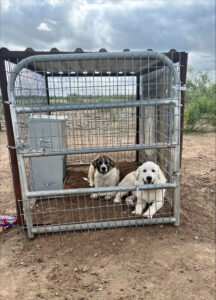
Maverick (left) and Goose getting some shade inside their feeding station. (Texas A&M AgriLife photo courtesy Saldana 2023)
We will be adding in bonding animals that have lambs and kids to observe the dogs’ interactions with young animals. If you recall from the May blog, we had issues with several of the pups in this round biting and chewing on the ears of young animals in the bonding pens. Leash and tether training are all proceeding well with the pups along with truck rides. The Komondor pups are still larger overall than the Great Pyrenees X Anatolian Shepherd pups. Maverick has gained weight since his blocked digest track from eating cottonseed. Switching the animals in his pen to livestock cubes helped break this behavior.
In closing
If you enjoyed this monthly LGD blog, please don’t forget to subscribe to it with this link The Guardian Way | Texas A&M AgriLife Research and Extension Center at San Angelo.
To provide feedback on this article or request topics for future articles, please contact me at bill.costanzo@ag.tamu.edu or 325-657-7311.
The Texas A&M AgriLife Livestock Guardian Dog Program is a cooperative effort by Texas A&M AgriLife Research and the Texas Sheep and Goat Predator Management Board. Make sure to follow us on our social media sites and share them with your friends and family!
Facebook: https://www.facebook.com/TAMUlivestockguarddog/
Instagram: @tamulivestockguarddog
YouTube: https://www.youtube.com/channel/UCF7YbP6bNDV7___6H8mifBA
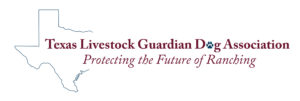 Do not forget to check out the Texas LGD Association online! Follow the organization at https://www.facebook.com/TexasLGDAssociation or check out their website!
Do not forget to check out the Texas LGD Association online! Follow the organization at https://www.facebook.com/TexasLGDAssociation or check out their website!

